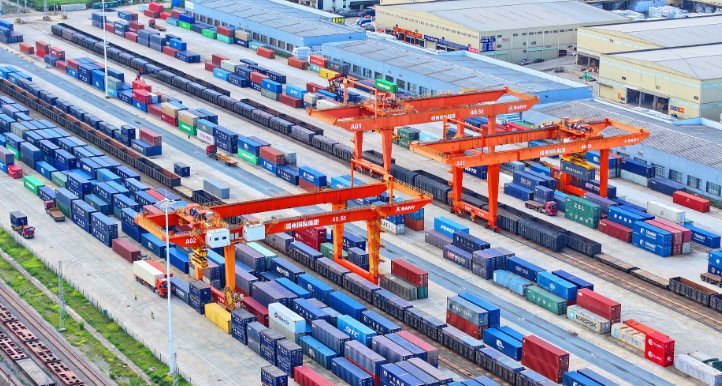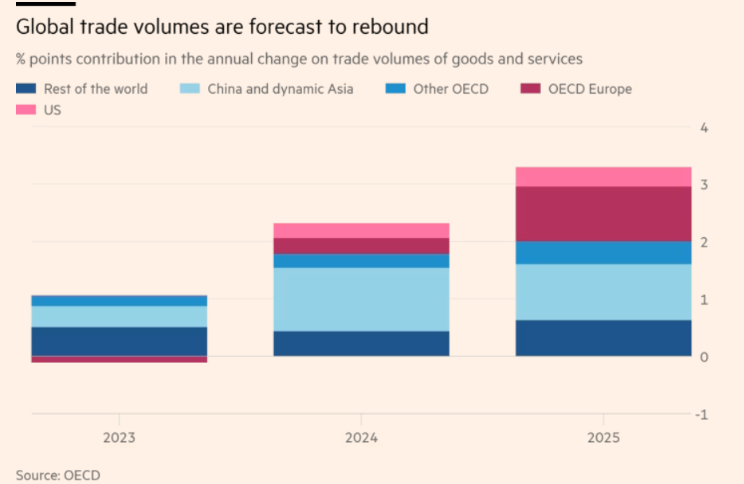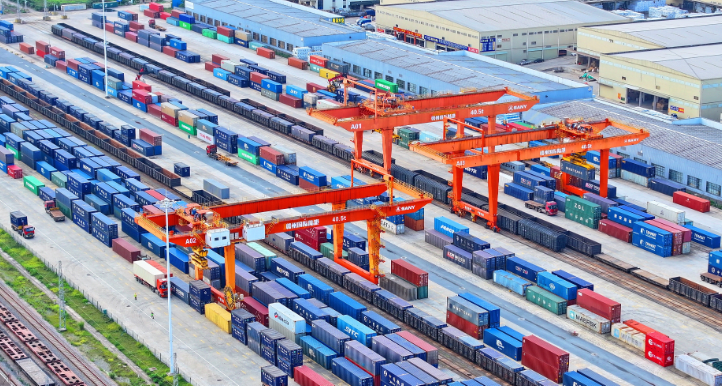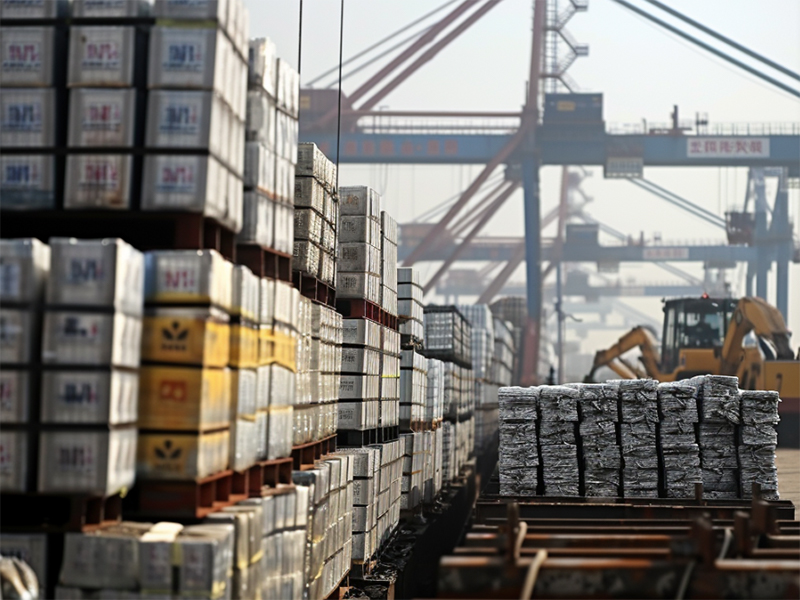"Global Trade Resurgence: Optimism Abounds for 2024 Rebound"

Author: Jeff Zheng
According to a recent report from the British Financial Times, global commodity trade is poised for a substantial resurgence in 2024, following a contraction experienced last year. Several international institutions have made optimistic forecasts, suggesting that after grappling with inflation, skyrocketing interest rates, and sluggish demand in 2023, global trade growth is set to more than double this year. Clare Lombardelli, the Chief Economist of the OECD, underscored that China and East Asia are anticipated to emerge as the primary engines driving global trade.
Projections from the organization indicate that global goods and services trade will surge by 2.3% in 2024, escalating further to 3.3% the following year, a significant leap from the mere 1% growth observed in 2023. The latest "Global Trade Outlook and Statistics" report by the World Trade Organization (WTO) corroborates this outlook, foreseeing a rebound in global merchandise trade volume by 2.6% and 3.3% in 2024 and 2025, respectively, after a 1.2% decline in 2023.
Echoing these sentiments, the International Monetary Fund (IMF) anticipates a 3% increase in global trade volume by 2024 in its latest World Economic Outlook report.
Lombardelli attributes this robust growth in global trade largely to what she terms as a "cyclical recovery," where trade expands in tandem with overall economic growth. She emphasizes the pivotal role China and East Asia are expected to play in driving trade activity.
"We are witnessing encouraging developments in trade both this year and the next," Lombardelli remarked.
OECD's forecast for the surge in global goods and services trade in 2024 underscores the pivotal contribution expected from China and East Asia.
Indeed, signs of the global trade renaissance have already manifested in first-quarter data this year: the Eurozone's overall economic growth rate rebounded to 0.3%, its highest level since the third quarter of 2022.
Neil Shearing, Chief Economist at Capital Economics, acknowledges the burgeoning signs of global trade recovery, signaling the end of what he terms the "manufacturing recession" that hampered trade activity in 2023.
He notes that the Eurozone, heavily reliant on trade, is showing signs of a moderate recovery, with Southern European countries reaping benefits from the resurgence in tourism.
Spain, for instance, is among the beneficiaries, with data from the Spanish National Institute of Statistics indicating that external demand contributed 0.5 percentage points to the country's quarterly GDP growth, while domestic demand added 0.2 percentage points. Similarly, Germany, Europe's largest economy, reported that net exports drove first-quarter economic growth.
Data released by the German Federal Statistical Office revealed that in March of this year, German exports exceeded expectations, growing by 0.9% compared to the previous month. Notably, exports to China surged by 3.7% to 8.3 billion euros.
"We initially anticipated a rebound in the Eurozone's foreign trade this year, but current indications suggest that the rebound, particularly in exports, is happening sooner than expected," noted Salomon Fiedler, an economist at Berenberg Bank, in comments to the Financial Times.
On May 5, 2024, in Nankang District, Ganzhou City, Jiangxi Province, China, the Ganzhou International Land Port bustled with the hustle and bustle of vehicles, as cranes loaded and unloaded containers of import and export goods.
According to the "World Trade Monitor" by the Netherlands Bureau for Economic Policy Analysis (CPB), global merchandise trade experienced growth for the first time in a year in February. This growth, propelled by the expansion of the Chinese and U.S. economies, saw the growth rate of global merchandise trade climb from a contraction of 0.9% in the previous month to 1.2% in February.
Despite the gradual resurgence in global commodity trade, institutions caution that global trade growth in 2024 is unlikely to fully recover to pre-pandemic levels. IMF data reveals that from 2006 to 2015, the annual average growth rate of global goods and services trade stood at 4.2%.
OECD, IMF, and WTO all issue warnings, citing significant downside risks to forecasts arising from regional conflicts, geopolitical tensions, and economic policy uncertainties. "Governments should prioritize national security, self-sufficiency, and support for domestic enterprises," they assert.
Shearing also highlights that the U.S. presidential election introduces additional uncertainty into the global trade outlook for 2025, given former President Trump's previous plans to impose a 10% tariff on all goods imported into the United States if re-elected.







